Blog
Weather in Northern Vietnam: Things you need to know when traveling

Please log in to continue

Weather in Northern Vietnam: Things you need to know when traveling
April 29, 2021
When should you go to Northern Vietnam? What kind of weather is ideal? These are the most common questions, but Northern Vietnam has a wide variety of weathers across the year. Let us find out about the different weather and activities in this area to have the best experience.
Humid tropical monsoon is the main climate in Northern Vietnam, dividing the weather into 4 distinct seasons. Summer here is distinct with hot air and lots of rain, while in the winter, the effect of the northeast's wind makes it cold and dry.
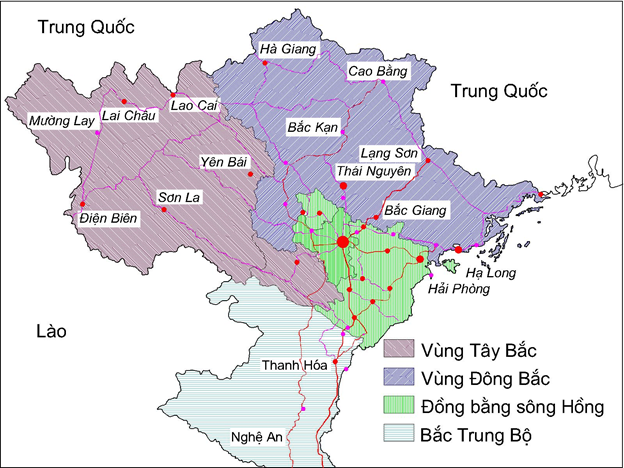
Popular springtime destinations: Hanoi, Sapa, Ha Giang
Spring is the most beautiful season in the North of Vietnam. It is the season of beautiful flowers and cultural events, including one of Vietnam’s most important holidays: Tet - Vietnamese Lunar new year celebration. Discovering this place in spring is definitely a great idea.
Spring in Hanoi is picturesque. There is a subtle change in weather and temperature when spring comes. At this time of the year, you will most likely find yourself lost in the middle of hundreds of different kinds of flowers, such as the lovely Dao flower, colorful Dahlia, and pure white Sua flower. Not to mention there are a bunch of activities for you to experience the culture of Vietnamese people. See how they celebrate their new year by cooking grand meals, praying in pagodas, and asking for lucky calligraphy.
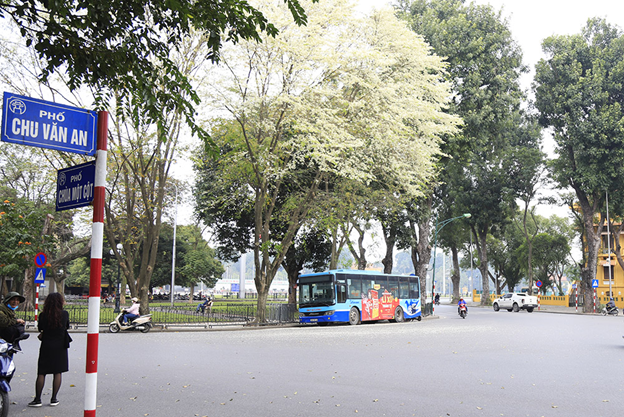
Sua flower blossom dying Hanoi in white
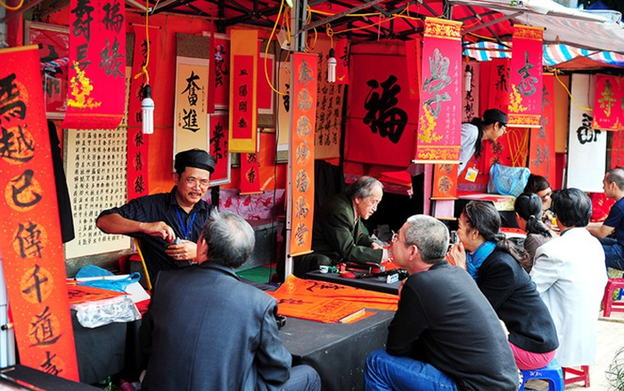
Lucky calligraphy tradition at Van Mieu, Hanoi
Sapa and Ha Giang are also popular destinations in spring. Enjoy the chilly and breezy weather and see exotic plants like the plum flower that are blooming garishly. Any tourists will be impressed by the romantic scenery of the mountains and the people.
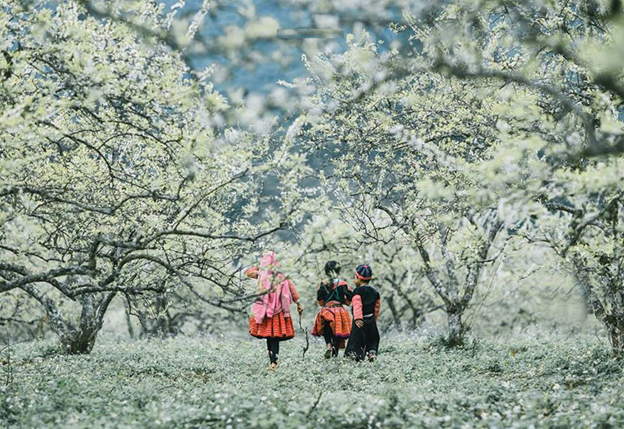
Plum flower blossom in spring
Popular summertime destinations: Hanoi, Moc Chau, Lai Chau, Sapa, Bac Kan, Ha Giang
It is no longer cold at this time. Summer in the North of Vietnam is hot and rainy, especially from June to July when the weather is extremely sunny and muggy.
Tourists traveling to Northwestern provinces can admire the majestic beauty of various waterfalls in the summer. What’s more, May and June are called “Water season” when water from the rivers is pumped into fields. You can have a look at the simple but elegant water wheels and even take part in some activities with the locals such as catching fish and shrimps and taste the unique cuisine there.
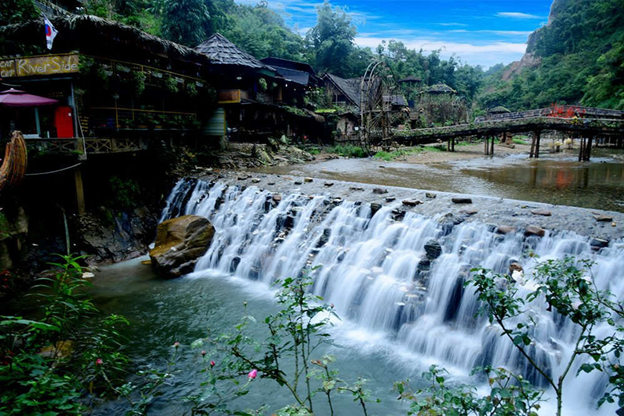
Cat Cat Village, Sapa (Lao Cai)
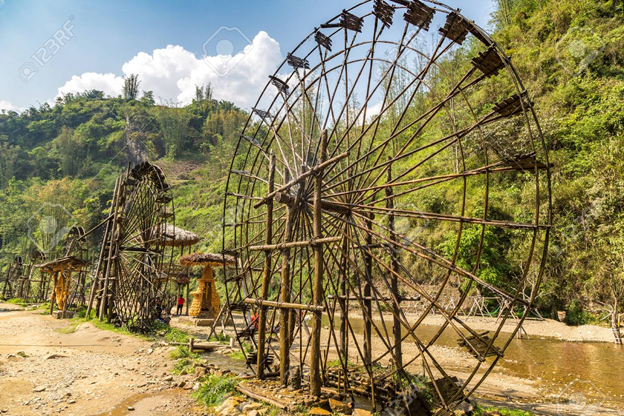
Water wheels in Cat Cat Village (Sapa, Lao Cai)
Meanwhile, during summertime, Hanoi offers a wide variety of flowers that bloom in every corner of the city. You can take pictures of the loving purple color of Crepe myrtle or the burning red shade of Phoenix flower.
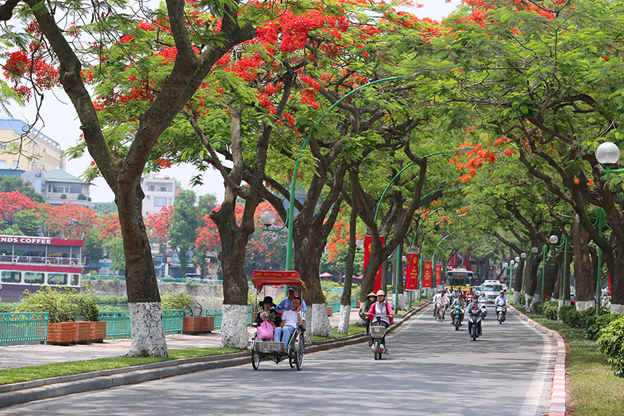
Phoenix flowers in Hanoi
If you like to go backpacking, or you simply want to get away with the heat, it is ideal to hire a motorbike and drive across terraced fields in Northeast and peek at manifold natural sceneries with cool weather and fresh air.
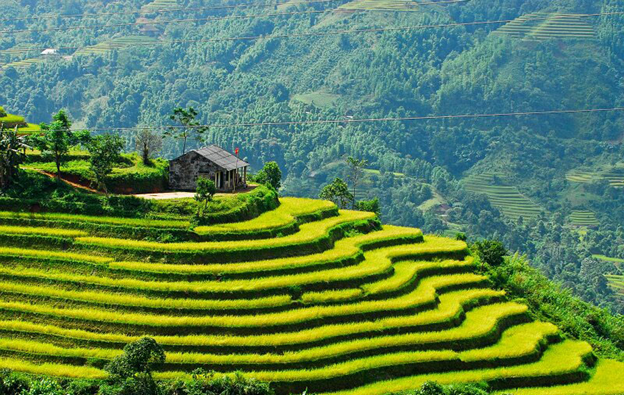
Terraced fields in Ha Giang
Popular autumntime destinations: Mu Cang Chai, Ha Giang, Cao Bang, Sapa, Halong Bay, Hanoi
The weather of Northern Vietnam in autumn is gentler. The mornings are filled with light sunshine and the evenings are cool and chilly.
Autumn is also called the “Yellow season” in the Northeastern provinces. This marks its peak beauty. The reason behind the name is that autumn is when nearly 10 hectares of rice on terraced fields are ripped and turns yellow, creating one of the most remarkable scenes of the area. Along with the yellow color of rice are the fresh green color of tea fields on steep mountainsides.

“Yellow season” in Mu Cang Chai (Yen Bai)
Meanwhile, Northwest is famous for winding rivers, powerful waterfalls, and gorgeous buckwheat flowers. Don’t forget to drop by Nho Que River in Ha Giang to admire the lilac-blue color and silk-like flow of the water and join the local “Buckwheat flower Festival” to fully see one of the most highly recommended sceneries in the North of Vietnam.
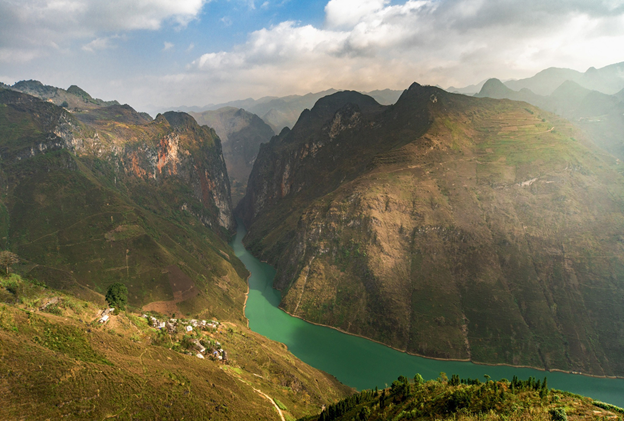
Nho Que River (Ha Giang)
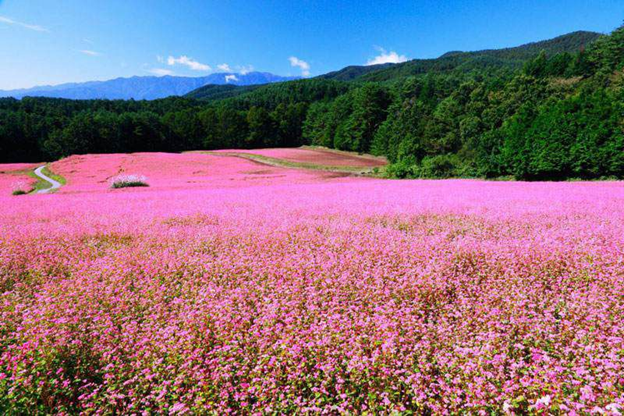
Buckwheat flower in Ha Giang
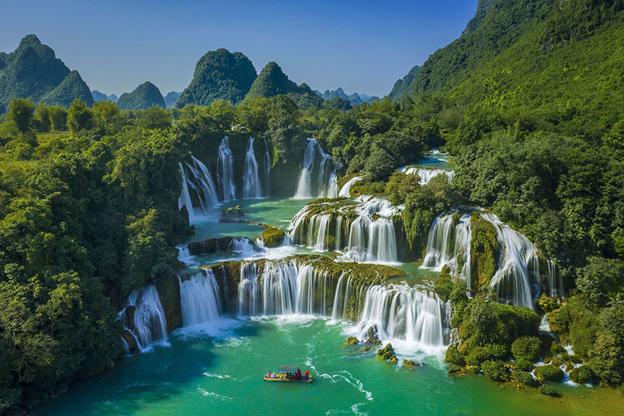
Ban Gioc Waterfall (Cao Bang)
It is also recommended to visit Hanoi and Halong Bay during autumn when the heat and the rain are gone and the weather is pleasant. You can also have the best view of the sceneries, unlike in winter when there will be mist which can affect your travel experiences.
Popular wintertime destination: Ha Giang, Moc Chau, Sapa
Due to the northeast wind, the weather in Northern Vietnam around this time is very cold and windy. However, winter is still ideal to visit some of the mountainous provinces in the North. Not only can you experience the numbing cold but you can also see snow, which is very rare in this tropical country.
Come to cloudy Ha Giang in winter and feel the coziness sitting by the Vietnamese bonfire and appreciate the wild yet simple mountainous surroundings. You can sometimes see snow in Ha Giang if the temperature drops low enough.

Cloudy Ha Giang in winter
If you want the view of white choy flower fields then maybe pay a visit to the Northwest in November. Flower fields in Moc Chau (Son La) are also popular with tourists with buckwheat flowers, Mexican sunflowers, and plum flowers.
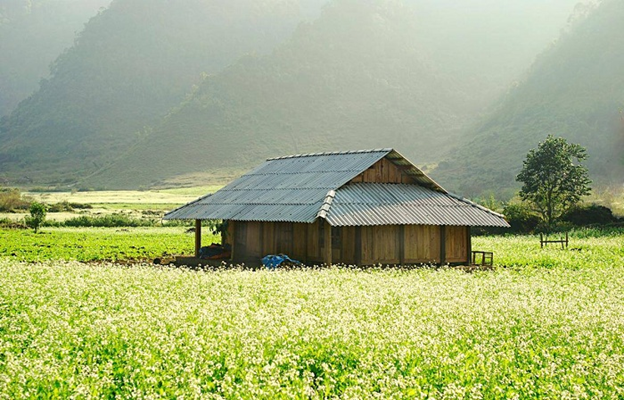
White choy flower in Moc Chau (Son La)
Last but not least is Sapa, the favorite destination during winter. While the temperature drops lower and lower, more and more tourists travel to this land. Some come for the snow, some come for the misty atmosphere and freezing experience, others come for the winter cuisine of Sapa.
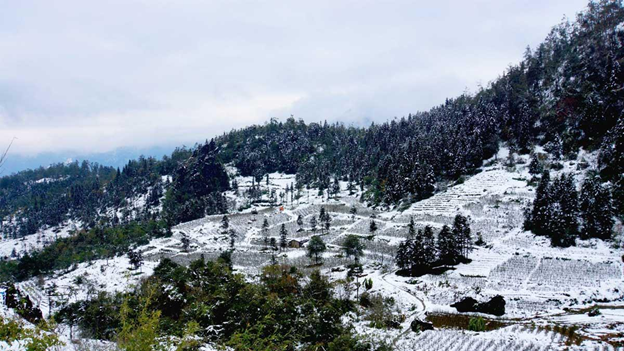
Snowing Sapa in the winter
It is hard to decide which is the best time to visit the North of Vietnam as each part has its unique beauty in each season. Experience it yourself and tell us how you feel in the comments!